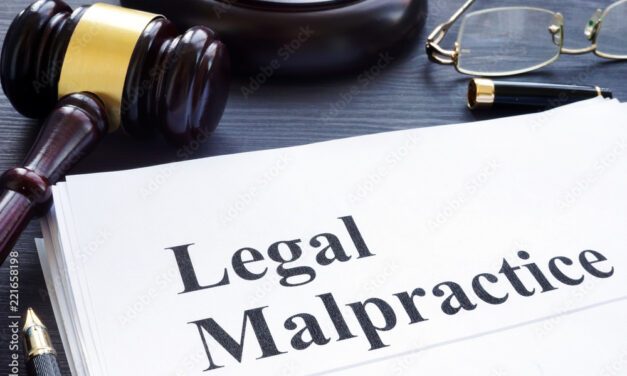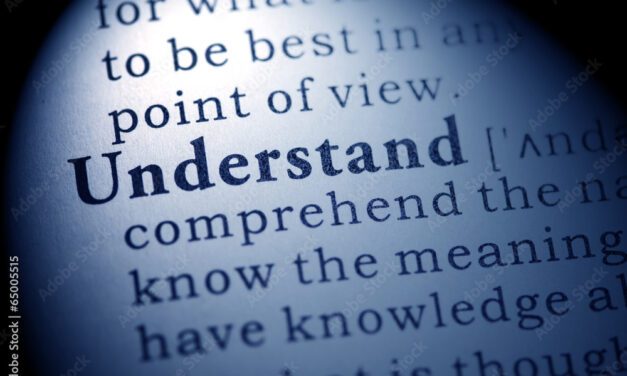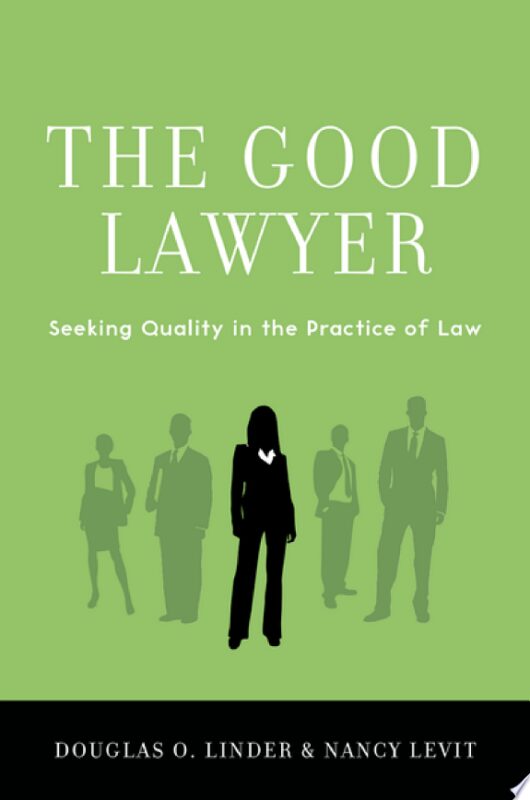Insurance Agent/Broker Malpractice in Alaska
STATUTE OF LIMITATIONS
This was a malpractice suit against an agent/broker of the plaintiff in the trial court and appellant in the Supreme Court. Christianson v. Conrad-Houston Insurance, 318 P.3d 390 (Alaska 2014). The key issue in this tangled case was when did the insure the customer-client of the insurance agent first have notice of the possible misconduct of his agent.
Short Summary
The case hinged on an Alaska statute of limitations. Todd Christianson (“Christianson”) and at least one of his several companies, Great Alaska Lawn and Landscaping, Inc., sued his insurance agent broker after losing two underlying insurance coverage cases and parts of the bodily injury tort case brought against Christianson-owned businesses that underlay the coverage cases companies. In the bodily injury case, Christianson prevailed in the trial court but the Alaska supreme court reversed and sent it back. The next two were insurance coverage suits initiated by insurers pursuing declaratory judgment suits. Christianson lost them both. In this case, the fourth one against the insurance intermediary, Christian also lost.–MSQ
Longer Summary
Christianson was in the landscaping business. During the relevant interval, he had three separate companies: (1) Great Alaska Lawn and Landscaping (“GALL”) formed in 1992 and involuntarily dissolved in 2002. In that same year, (2) Christianson formed a new company and named it Titan Enterprises, a (3) Titan Topsoil having been formed earlier by him in 1995. The three companies did roughly the same type of work. The court refers to both the Titan companies as “Titan,” and Christianson owned each of them.
Keith Jones (Jones) suffered an above-the-knee amputation of his leg. AIG paid Jones’s worker compensation claim. He then sued Christianson, the owner of the businesses and the manufacturer of the equipment that injured him. His suit against Christianson was based on the allegation that he negligently altered the equipment making it dangerous, and lent it to the injured worker’s actual employer, one of them owned by Christianson. Consequently, the argument went, Christianson was a proximate cause of his injuries.
Jones lost that case in the trial court, but the judgment was reversed in the Supreme Court of Alaska. (Jones v. Christianson, 282 P.3d 316 (Alaska 2012). Since each of the relevant insurers had denied coverage, even to provide a defense, Christianson was left to pay his own legal fees and exposed to paying the liability judgment. As the court remarks, in this case, Christianson’s accumulated legal fees were substantial. Insurance Intermediary Case. In 2003, Christianson contacted Mike Dennis (“Dennis”), an agent with Conrad-Houston Insurance (CHI), seeking, Christianson said in a deposition, complete coverage for both Titans. CHI obtained three policies: workers comp from AIG, CGL from Great Divide Insurance Company (Divide), and auto from Cascade National Insurance Company)(Cascade).
After losing the two coverage cases, Christianson filed the fourth suit in the sequence against his agent, Conrad-Hilton (CHI), for purchasing erroneous and insufficient policies. Christianson lost his case in the district court, on statute of limitation grounds, and the Supreme Court affirmed. At the same time, however, the Supreme Court indicated that it concluded that the person servicing the insurance needs of the Christianson companies had failed to exercise due care by failing to purchase know policy requests. This case was decided 4-1, with one justice abating.
In June 2003, an employee of Titan, Keith Jones (“Jones”) sustained a serious bodily injury—an amputation above the knee on his right leg–from a hydro-mulcher aka hydroseeder (“seeder”). AIG paid the “comp” claim. In September 2004 Jones sued the manufacturer of the seeder, Bowie Industries, Inc. (“Bowie”), and Christianson. In the suit, Jones pursued the regular causes of action against companies that allegedly have manufactured a defective product, and Christianson was alleged of “negligence in transferring the seeder to Titan, loaning a defective seeder to Titan, making modifications to the seeder that contributed to its defects, and failing to warn [him] of the inherent dangers involved in operating th[at] machinery.”
(The loan of the seeder involved Christianson lending a truck last registered to GALL. Titan routinely operated its business out of the GALL entity, such as it was. The reason for the loan, as opposed to a sale, was the apparent existence at the time of a federal tax lien.)
At some point, Christianson had filed a claim with Divide, and it issued a letter to Christianson. The letter stated that the insurer was investigating the claim and that in the interim Christianson would have to pay his own defense costs, but that he would be reimbursed for reasonable fees and costs if there was coverage, but not otherwise.
The letter also quoted exclusions applying to bodily injuries to employees. In addition, the letter stated that Divide was reserving all its rights. In March 2006, 18 months later, or so, Divide formally actually denied coverage and filed an action for declaratory judgment in federal court seeking a no-coverage judgment. The fact that GALL seems to have owned the truck to which the seeder was attached was apparently significant. During that litigation, Divide took the deposition of CHI’s representative. He basically said that he did not make any effort to determine who owned the relevant truck or make sure GALL was insured. (Of course, that is a negligent omission and surely played a background role in the evaluation of CHI’s conduct.) In July 2007, the federal court declared that Titan and Christianson had no coverage.
During the same month, Christianson tendered his claim in Jones’s case to CHI, but it “declined the tender,” i.e., denied liability for Christianson’s claim.
Shortly thereafter, in October Cascade, the auto carrier filed its own “dec” action, and in November, even a shorter period of time, it obtained a judgment of no coverage. Jones’s personal injury case was tried in February-March 2008. Both Christianson and GALL prevailed. The superior court directed a verdict for Christianson, and the jury returned a verdict for GALL. However, this court reversed both judgments because of several errors by the judge below and sent the case back for another trial. (With respect to Christianson, the reasoning of the judge below pertained to the corporate nature of GALL.)
Christianson sued CHI on August 6, 2008. “His complaint alleged that CHI and Dennis breached their professional duty of care in exposing him to the costs of litigation and the risk of an uninsured judgment and therefore caused him ‘to spend money in his own defense.” The allegation was that Christianson had to spend over $100,000 in defending the personal injury case and the insurers’ declaratory judgment cases. CHI denied liability and asserted that the period of limitation had begun more than three (3) years before this suit was filed. It contended that at the end of October 2004, in other words, approximately 5 weeks after Divide’s letter of September 23rd.
In opposition to CHI’s motion for summary judgment, Christianson argued that there was a fact issue “as to when he discovered the elements of his claim against CHI.” (No issue as to equitable tolling is to be found in the majority opinion, in contrast to that of the dissenter.)
The superior court focused on the date of the Divide letter, September 24, 2004, and observed that it contained several important pieces of information. First, it was necessary for Christianson to defend himself for a while since he likely needed to consult a lawyer. Divide in effect “disclaimed its duty to defend,” even though its policy contained the usual relevant language. Second, the carrier quoted a significant exclusion regarding an injury to employees, and Christianson “was fully aware that [Jones] was Titan’s employee. Thus, he was aware of the reasons upon which Divide would base its denial of coverage. At that point, saidCHI HI“it was evident that there were potential coverage gaps for “Christianson….” “A reasonable person in [Christianson’s] circumstances would have had enough information to alert him that he should begin an inquiry to protect his rights[,]” as the superior court put it. In addition, there were Dennis’s statements in his deposition. This would have indicated to a reasonable period that Cascade might well also deny coverage, though it had not happened yet.
The relevant statute of limitations (A.S. 09.10.053) is three years for malpractice cases. It begins to run when the last element in the cause of action was or should have been discovered by a reasonable person under the circumstances. This time period can be measured from the point in time when a reasonable person would have commenced a reasonable inquiry, given the circumstances. In Alaska, his is called “inquiry notice.” In effect, Alaska’s laws governing the limitation period are through-and-through a “discovery rule,” as the supreme court” recognized in its opinion. See Gudenau v. Sweeney Ins. Inc., 736 P.2d 763 (Alaska 1987)
The supreme court takes it that in 2004 Christianson was aware that he was beginning to sustain losses for which he very much might not ever receive reimbursement. Of course, he knew for certain he might lose more but did not prevent his cause of action against CHI from accruing. The fact that he probably could not then the amount of his future losses is irrelevant.
After the supreme court discusses matters leading up to the superior court’s decision, it affirmed the judgment of that court in short order. It had not erred in any of the following ways, given the facts, in this case, the doctrine of “inquiry notice” and Alaska law regarding the statute of limitations:
finding that Christianson was put on inquiry notice,finding that the September 23rd letter alerted Christianson that Divide would not pay for its defense,finding facts regarding Christianson’s good-faith belief that he was covered in the Jones lawsuit,failing to resolve the issue as to whether or not Christianson conducted a reasonable inquiry,not considering the bearing of public policy on the case, andfinding that equitable tolling would not excuse the untimeliness of Christianson’s lawsuit against CHI.
The dissenting opinion does not appear to dispute the facts set forth in the majority. According to the dissenting Justice, the dissent is about the application of the discovery rule. In the opinion of the dissenting Justice, “the statute of limitations did not begin to run until Great Divide formally disclaimed its duty to defend Christianson in March 2096 [at the earliest].
More particularly, the dissenting opinion sets forth the following errors in the superior court, citing a varietyof different kinds of Alaska cases and some from other jurisdictions:
The statute of limitations did not begin to run on September 24, 2004, because (1) Christianson had not yet suffered a definite injury attributable to CHI. Hence, that claim was not yet ripe. Jarvill v. Porky’s Equip., 180 P.3. 335, 340-41 (Alaska 2008). (2) Divide’s letter of 9/24 was not a definitive denial of coverage. (3) Divide’s letter of 9/24, given its language, did not effectively decline coverage. (4) Divide’s discussion of the employee exclusion in the policy did not constitute a denial of coverage. (5) Many people do not have a well-informed knowledge of what exclusions mean and—in this context—a “murky and fact-sensitive” inquiry into what a reasonable period might realize and do is inconsistent with the clarity required for triggering the statute of limitations.
The doctrine of equitable tolling applies said the dissenting justice. That principle provides that when a defendant has “more than one legal remedy available to him” the statute is to be tolled. Its elements are these: “(1) pursuit of the initial remedy given defendant notice of plaintiff’s claim, (2) defendant’s ability to gather evidence is not prejudiced by the delay, and (3) plaintiff acts reasonably and in good faith.” These conditions are met, says the dissenting opinion. See Brannon v. Continental Cas. Co., 137 P.3d 280, 286 (Alaska). Of course, the majority opinion rejects all of this.
Christianson’s disputes with the insurance companies satisfy the first element. The presentation of the claim to the insurers gave CHI notice of Christianson’s claim, and its opportunity to gather evidence would not be harmed by the delay permitted by equitable tolling. Finally, determinations regarding whether Christianson acted reasonably and in good faith are questions of fact and should not be granted without due empirical inquiry.
Some Observations When considered as a constellation or as a concatenation, these cases are an insurance litigation nightmare.
The supreme court’s opinion is a lengthy one. It involves a considerable amount of the three forms of underlying litigation—a personal injury tort case, two coverage declaratory judgment cases, and the cases against the insurance intermediary, two of which involved appeals. A printed copy of the WestLawNext opinion and the dissent, double-column pages, is 44, including 6 pages of 133 footnotes—some quite lengthy and most listing and/or discussing precedent–and 21 headnotes.
The opinion of the supreme court in the underlying tort case was nearly as long and just as complicated as this case. This is true even though it had 102 footnotes; the two opinions evened out since the underlying case had 36 headnotes and many more issues. Here is a list of the issues: admission of evidence errors, problematic expert testimony, problems arising out of compliance with regulations of the Occupational Safety and Health Administration, and the post-sale duties of a manufacturer regarding informing customers of life-threatening dangers that exist in defective products, and the Alaska statute of repose. Jones v. Bowie Industries & Christianson, 282 P.3d 316 (Alaska 2012).
The approach of the majority in this, the insurance intermediary case, is erroneous. For one thing, it makes a number of decisions about Christianson’s knowledge and conduct that are factual matters, even though there had been little discovery about those relevant matters. What did Christianson believe about the letter of September 24th, when did he believe it and why?
This is not a coverage case where the rule requires an insured to understand a policy as it may apply to the ostensible facts of a case. It is only about the meaning of language in what is in effect a reservation of rights letter. The rule regarding insureds understanding their policies may not apply to reservation rights letters, even if they as quoted from the contract of insurance. The context of a quote is significant.
Finally, Divide deferred any obligation to provide a defense until coverage as to its duty to indemnify. Doing this is an insurer error and the kind of error that imposes huge to impossible costs on most insureds. If so, one wonders why that fundament principle appeared, at least, to have played no role in the deciding at least one of the dec actions. In any case, Divide was making coverage decisions in the wrong order, failing to recognize that the duty defend is not established in the same way the duty to indemnify is, or both. Why should anything an insurer conveys to an insured is given the slightest attention, if the communiqué occurs within a time frame during which the insurer is making a hopeless error?
By the way, there is no indication in this case, or on the internet, as to the disposition of the underlying cause. Nor is there any, I have found, that Todd Christianson is or has been in bankruptcy.
It may or may not be worth noticing that there was the fifth suit against a lender bank arising during the time of the Jones suits. It was after add not a suit underlying this case. In fact, they had nothing to do with each other See Christianson v. First National Bank of Alaska, 2012 WL 6062124 (Alaska 2012). Then again, it is entertaining to wonder how the members of the supreme court feel about Christianson after his herd of cases was all gone, if indeed they really are.
Read More






Recent Comments